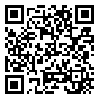Tue, Dec 30, 2025
Volume 34, Issue 3 (6-2024)
JHNM 2024, 34(3): 262-269 |
Back to browse issues page
Download citation:
BibTeX | RIS | EndNote | Medlars | ProCite | Reference Manager | RefWorks
Send citation to:



BibTeX | RIS | EndNote | Medlars | ProCite | Reference Manager | RefWorks
Send citation to:
Mazloum H, Razaghi N, Behnam Vashani H, Pourbadakhshan N. Effect of Animation Display of Urinary Catheterization on the Anxiety of Mothers With Hospitalized Children: A Quasi-experimental Study. JHNM 2024; 34 (3) :262-269
URL: http://hnmj.gums.ac.ir/article-1-2375-en.html
URL: http://hnmj.gums.ac.ir/article-1-2375-en.html
1- MSc in Nursing, Research Committee, School of Nursing and Midwifery, Mashhad University of Medical Sciences, Mashhad, Iran.
2- Assistant Professor, Department of Pediatric Nursing, Nursing and Midwifery Care Research Center, Mashhad University of Medical Sciences, Mashhad, Iran. ,Razaghin@mums.ac.ir
3- Instructor, Department of Pediatric Nursing, Nursing and Midwifery Care Research Center, Mashhad University of Medical Sciences, Mashhad, Iran.
4- Assistant Professor, Department of Pediatric, Faculty of Medicine, Mashhad University of Medical Sciences, Mashhad, Iran.
2- Assistant Professor, Department of Pediatric Nursing, Nursing and Midwifery Care Research Center, Mashhad University of Medical Sciences, Mashhad, Iran. ,
3- Instructor, Department of Pediatric Nursing, Nursing and Midwifery Care Research Center, Mashhad University of Medical Sciences, Mashhad, Iran.
4- Assistant Professor, Department of Pediatric, Faculty of Medicine, Mashhad University of Medical Sciences, Mashhad, Iran.
Abstract: (1033 Views)
Introduction: The performance of invasive methods, such as urinary catheterization in children, usually creates emotional distress in their parents. It is necessary to use appropriate interventions to reduce the anxiety of mothers and hospitalized children.
Objective: The present study aimed to investigate the effect of the animation display of urinary catheterization on the anxiety of mothers with hospitalized children in 2021.
Materials and Methods: This quasi-experimental study was conducted on 60 mothers (30 mothers in each group) of children aged 1 month to 12 years in the emergency ward of one of the children’s teaching hospitals affiliated with Mashhad University of Medical Sciences, Mashhad City, Iran. They were selected by convenience sampling. Mothers were grouped into intervention and control by random allocation. In the first stage, animation videos on inserting a urinary catheter were prepared separately for male and female children. In the second stage, in the intervention group, mothers watched the animation related to the procedure before the urinary catheter insertion. In the control group, the mothers of hospitalized children were provided face-to-face explanations about the method before urinary catheterization. The Spielberger state-trait anxiety inventory was completed before and after the intervention for both control and intervention groups. The obtained data were analyzed using descriptive (Mean±SD) and inferential (the independent t-test and chi-square test) statistics.
Results: The Mean±SD ages of mothers in the intervention and control groups were 36.9±10.87 and 34.44±9.27, and the mean ages of the children in these two groups were 3.5±6.29 and 2.89±6.73 years, respectively. The results of the present study demonstrated no statistically significant difference between the two groups in the mean anxiety score of mothers before watching the animation video. Nonetheless, after watching that animation, there was a significant difference between the two groups (P=0.001), and watching the animation video of urinary catheterization significantly reduced mothers’ anxiety.
Conclusion: The present study pointed out that educational animation videos of urinary catheterization reduce mothers’ anxiety levels. It seems that the use of educational animation as an effective, quick, accessible, and easy intervention can be helpful in the reduction of anxiety and enhancement of knowledge among mothers of hospitalized children.
Objective: The present study aimed to investigate the effect of the animation display of urinary catheterization on the anxiety of mothers with hospitalized children in 2021.
Materials and Methods: This quasi-experimental study was conducted on 60 mothers (30 mothers in each group) of children aged 1 month to 12 years in the emergency ward of one of the children’s teaching hospitals affiliated with Mashhad University of Medical Sciences, Mashhad City, Iran. They were selected by convenience sampling. Mothers were grouped into intervention and control by random allocation. In the first stage, animation videos on inserting a urinary catheter were prepared separately for male and female children. In the second stage, in the intervention group, mothers watched the animation related to the procedure before the urinary catheter insertion. In the control group, the mothers of hospitalized children were provided face-to-face explanations about the method before urinary catheterization. The Spielberger state-trait anxiety inventory was completed before and after the intervention for both control and intervention groups. The obtained data were analyzed using descriptive (Mean±SD) and inferential (the independent t-test and chi-square test) statistics.
Results: The Mean±SD ages of mothers in the intervention and control groups were 36.9±10.87 and 34.44±9.27, and the mean ages of the children in these two groups were 3.5±6.29 and 2.89±6.73 years, respectively. The results of the present study demonstrated no statistically significant difference between the two groups in the mean anxiety score of mothers before watching the animation video. Nonetheless, after watching that animation, there was a significant difference between the two groups (P=0.001), and watching the animation video of urinary catheterization significantly reduced mothers’ anxiety.
Conclusion: The present study pointed out that educational animation videos of urinary catheterization reduce mothers’ anxiety levels. It seems that the use of educational animation as an effective, quick, accessible, and easy intervention can be helpful in the reduction of anxiety and enhancement of knowledge among mothers of hospitalized children.
Article Type : Research |
Subject:
General
Received: 2023/06/9 | Accepted: 2024/04/12 | Published: 2024/07/1
Received: 2023/06/9 | Accepted: 2024/04/12 | Published: 2024/07/1
Send email to the article author
| Rights and permissions | |
 | This work is licensed under a Creative Commons Attribution-NonCommercial 4.0 International License. |






